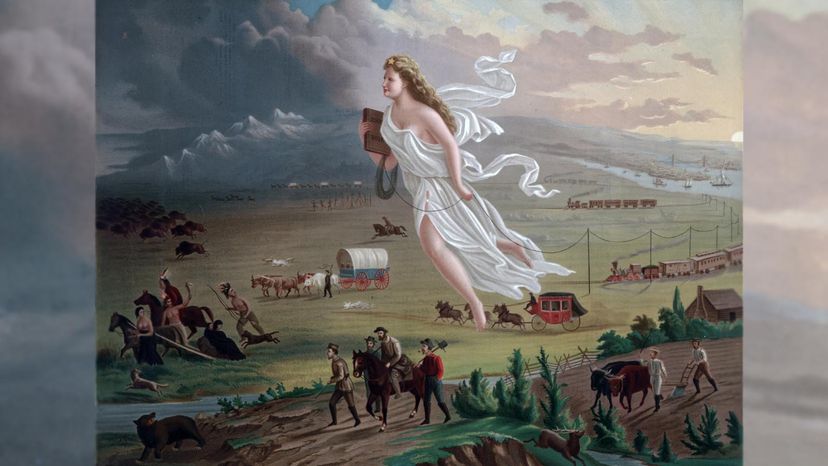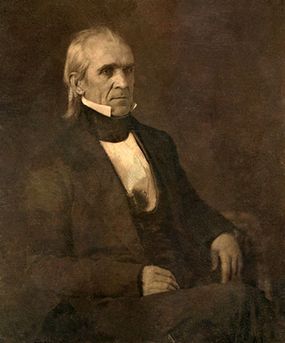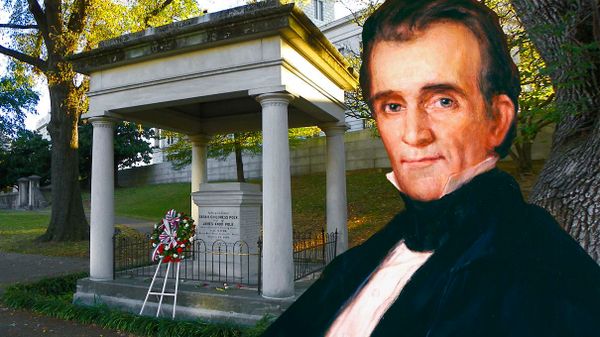
The woman in white floats above the verdant plain, eyes turned westward, a star glowing on her forehead. She is a phantasm, hovering at the center of the oil on canvas painting completed in 1872 by a Prussian named John Gast. The work is called "American Progress."
This simple painting, less than a foot tall, is the artistic realization of a concept that has been at the center of America's psyche for most of its existence. It's right there, in the painting's subtle and brutal allegory: The woman — a white woman, with wavy, golden hair — leads a group of settlers and farmers (also all white). In her left hand is a string of telegraph wire, in her right, a book. A stagecoach and a train follow in her wake.
Advertisement
In front, dark skies and foreboding mountains await. A herd of buffalo rumbles away in the distance. A wild beast snarls at her feet. A band of Native Americans flees as she glides ever onward.
She is Manifest Destiny, a belief born in America's infancy and fully implemented with the country's drive West in the 19th century. Manifest Destiny was a doctrine that espoused, simply put, that God wanted Americans to take over the continent.
In a single word, Manifest Destiny was — and still is — trouble.
Advertisement


